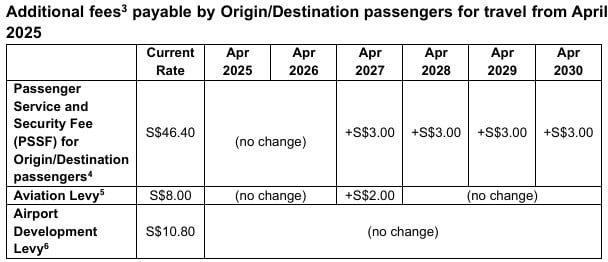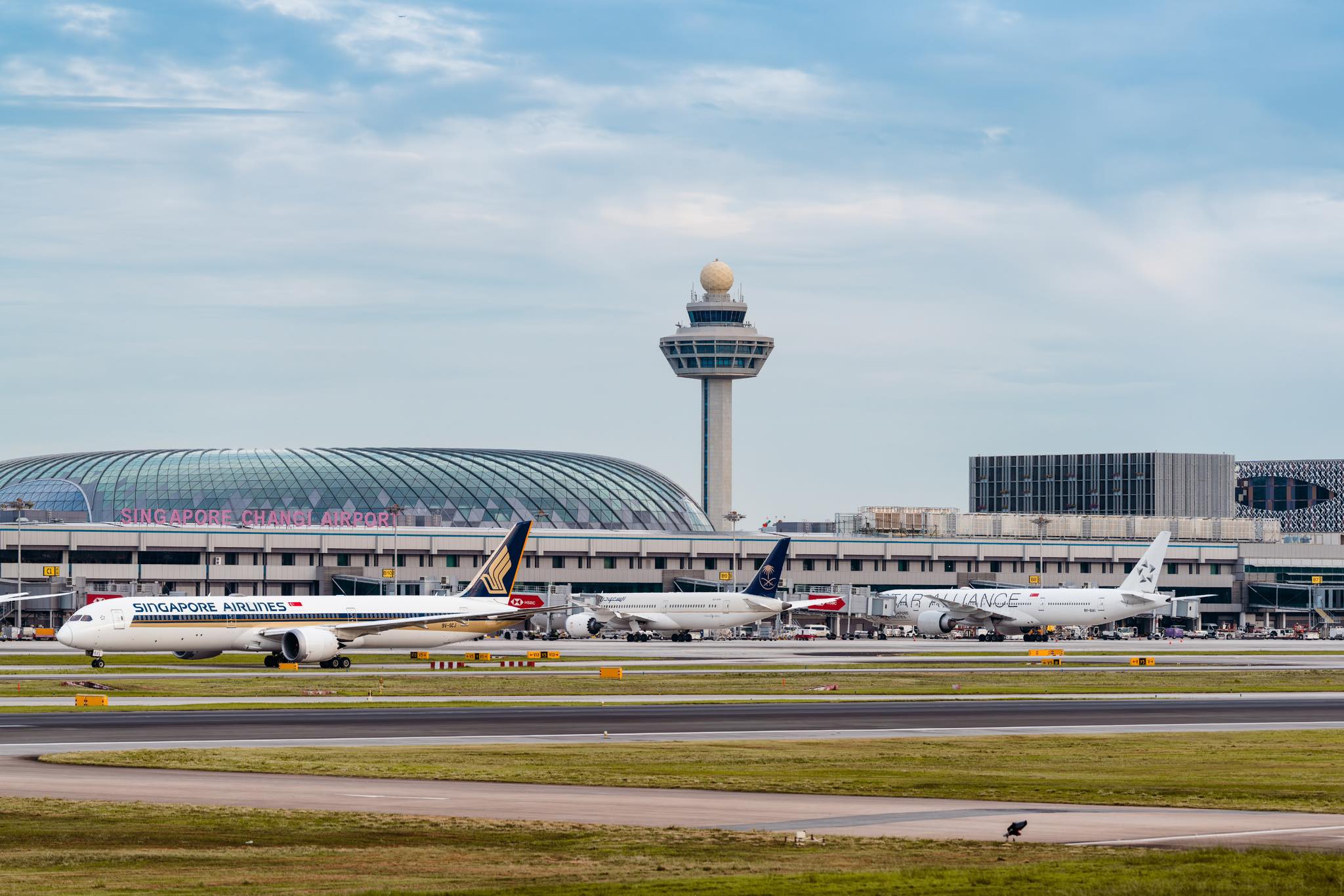Changi Airport to invest S$3B into service improvement, passengers & airlines to pay more fees
Passengers using Changi Airport can expect to pay up to 21% more in fees over the next six years as the facility seeks to finance sweeping upgrades to the tune of S$3 billion.
The increased airport charges were announced by the Civil Aviation Authority of Singapore (CAAS) in a news release on Thursday (7 Nov).

Source: Changi Airport on Facebook
Changi Airport fees to increase progressively from 2025 to 2030
Airport charges will go up in stages from 2025 to 2030, CAAS said.
Origin/destination passengers — those who begin their trip by departing from Changi Airport — currently pay a S$46.40 Passenger Service and Security Fee (PSSF).
This will stay unchanged for two years but will go up by S$3 per year from April 2027, hitting S$58.40 in April 2030.
Meanwhile, the Aviation Levy will increase by S$2 in April 2027. Only the Airport Development Levy will remain uncharged for the next six years.
Thus, passengers, who currently pay S$65.20 in fees and levies, will pay S$79.20 in April 2030 — an increase of about 21%.
CAAS added:
The fee increase per departing flight from 1 April 2027 is about 1% of an economy class ticket to Bangkok, and less than 0.5% of an economy class ticket to Tokyo or London, assuming today’s ticket prices.
Changi Airport transit passengers to pay 133% more in fees
Transit passengers — those travelling to and from other countries via Singapore without clearing Singapore immigration — currently pay S$9. This can be broken down into S$6 in PSSF and S$3 in Airport Development Levy.
The PSSF for transit passengers has remained unchanged since 2015 even as fees and charges were last reviewed in 2018, CAAS said.
From April 2025 to April 2027, the PSSF will increase by S$3 per year, and S$1 per year from April 2028 to April 2030.
That means transit passengers will end up forking out a total of S$21 in April 2030 — an increase of about 133%.
The hike will apply to air tickets issued from 1 Jan 2025, for travel from 1 April 2025, CAAS said, adding:
The fee increase per transfer from 2025 is less than 1% of an economy class ticket from London to Sydney, with a connection at Changi Airport.
Airlines must also pay more fees to land at Changi Airport
Airlines will not be spared the hike either, with landing, parking, and aerobridge (LPA) charges jumping every year from 1 April 2025.
For narrow-body A320 aircraft, the LPA charge will increase annually by an average of S$110 per landing for the first three years and an average of about S$65 per landing for the next three years. It currently costs about S$1,200 per landing.
For wide-body A350 aircraft, the LPA charge will increase annually by an average of S$290 per landing for the first three years and an average of about S$190 per landing for the next three years. It currently costs about around S$3,600 per landing.
Changi Airport Group (CAG) will give airlines a 50% rebate on the increase for six months from 1 April 2025 to 30 Sept 2025.
CAG to spend S$3B to upgrade all four terminals
The raising of airport charges will help CAG finance its S$3 billion investment over the next six years, aimed at improving services and replacing systems in all four terminals of Changi Airport, CAAS explained.
The funds will help the airport “stay competitive and meet rising demand for air travel” before Terminal 5 becomes operational in the mid-2030s.
They will be spent on expanding Changi Airport’s capacity, efficiency and resilience, improving the passenger experience, and making the airport a more attractive place to work.
Terminal 3 to be refurbished
One of the improvements will be the refurbishment of Terminal 3, which opened 16 years ago in 2008.
By 2030, T3 will be more than 20 years old.

Thus, CAS is planning to rejuvenate its systems and terminal facilities “to elevate the passenger experience and expand Changi’s retail offerings”.
This also includes the upgrading of T3’s baggage handling system “to enhance capacity, energy efficiency and resilience” and boost capacity by 65%.
A new rooftop Inter-Terminal Baggage Conveyance System that links T1 to T3 will also be constructed, so passenger baggage will have a “second pathway” between the two terminals, easing the demand on the current underground system and reducing the manpower needed.
A feature due for a replacement is the various Skytrain subsystems that started operations in 2008 and “are nearing end-of-life”, CAAS said.
New cars will be added to provide additional capacity, improving operational performance before the entire system is set for overhaul in the late 2030s.
Also read: Changi Airport has 6 secret spots S’poreans don’t know about, find them while in transit
Changi Airport has 6 secret spots S’poreans don’t know about, find them while in transit
Have news you must share? Get in touch with us via email at news@mustsharenews.com.
Featured image adapted from Changi Airport on Facebook.







